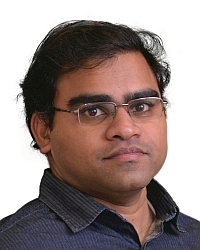TR2018-141
Discriminative Subspace Pooling for Action Recognition
-
- , "Discriminative Subspace Pooling for Action Recognition", Workshop on Perceptual Organization in Computer Vision as part of the European Conference on Computer Vision (ECCV), September 2018.BibTeX TR2018-141 PDF
- @inproceedings{Wang2018sep2,
- author = {Wang, Jue and Cherian, Anoop},
- title = {{Discriminative Subspace Pooling for Action Recognition}},
- booktitle = {Workshop on Perceptual Organization in Computer Vision as part of the European Conference on Computer Vision (ECCV)},
- year = 2018,
- month = sep,
- url = {https://www.merl.com/publications/TR2018-141}
- }
- , "Discriminative Subspace Pooling for Action Recognition", Workshop on Perceptual Organization in Computer Vision as part of the European Conference on Computer Vision (ECCV), September 2018.
-
MERL Contact:
-
Research Areas:
Abstract:
Adversarial perturbations are noise-like patterns that can subtly change the data, while failing an otherwise accurate classifier. In this paper, we propose to use such perturbations for improving the robustness of video representations. To this end, given a well-trained deepmodel for per-frame video recognition, we first generate adversarial noise adapted to this model. Using the original data features from the full video sequence and their perturbed counterparts, as two separate bags, we develop a binary classification problem that learns a set of discriminative hyperplanes - as a subspace - that will separate the two bags from each other. This subspace is then used as a descriptor for the video, dubbed discriminative subspace pooling. As the perturbed features belong to data classes that are likely to be confused with the original features, the discriminative subspace will characterize parts of the feature space that are more representative of the original data, and thus may provide robust video representations. To learn such descriptors, we formulate a subspace learning objective on the Stiefel manifold and resort to Riemannian optimization methods for solving it efficiently. We provide experiments on several video datasets and demonstrate state-of-the-art results.
